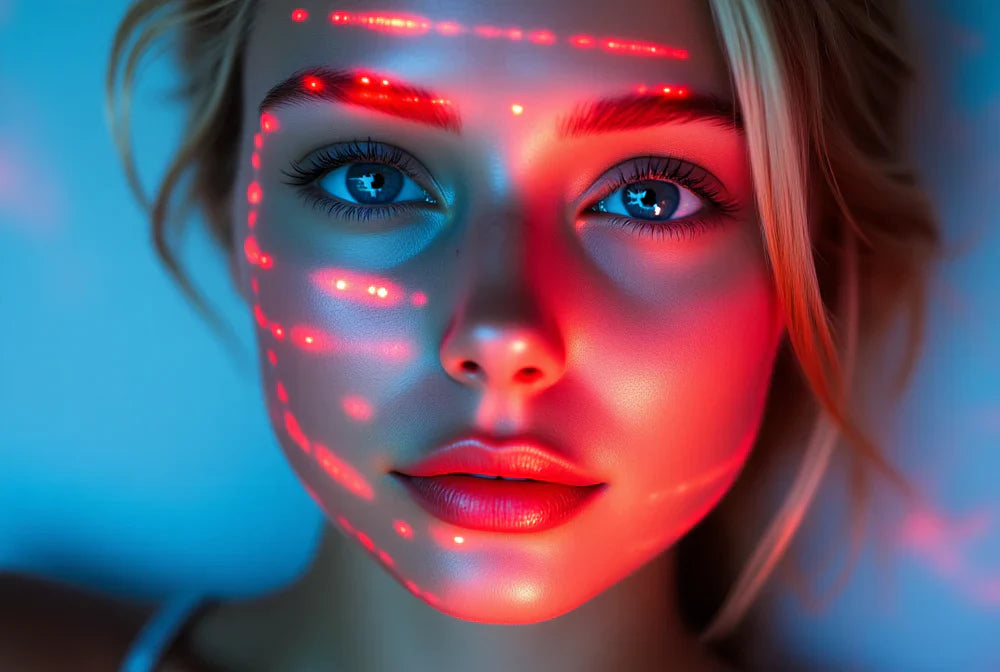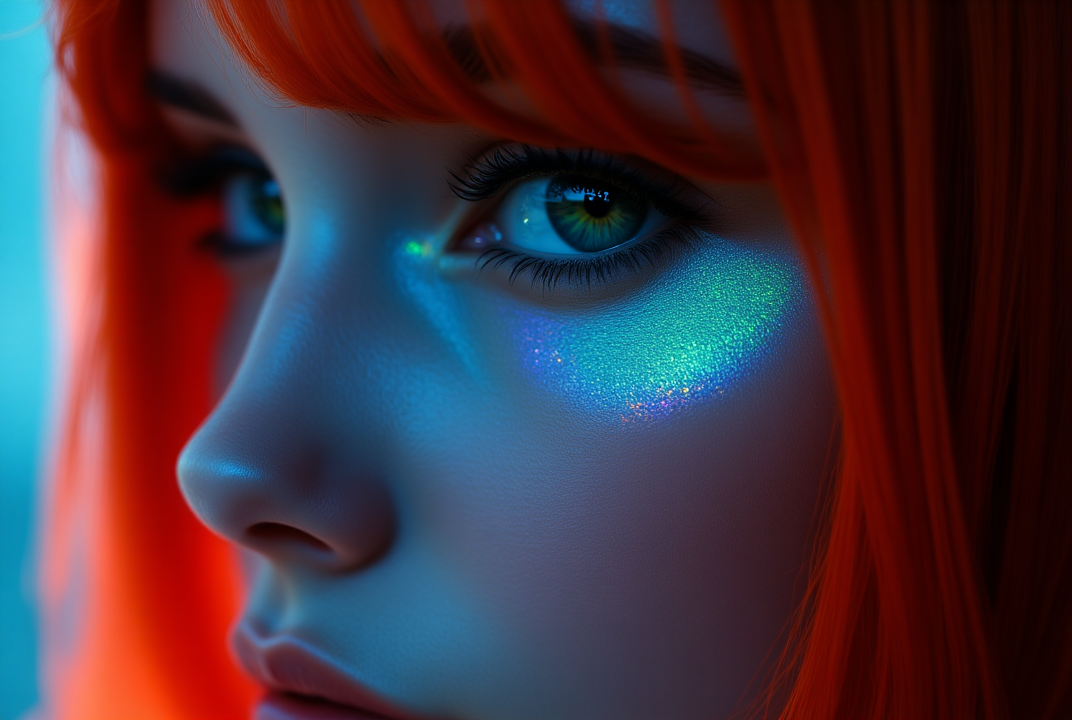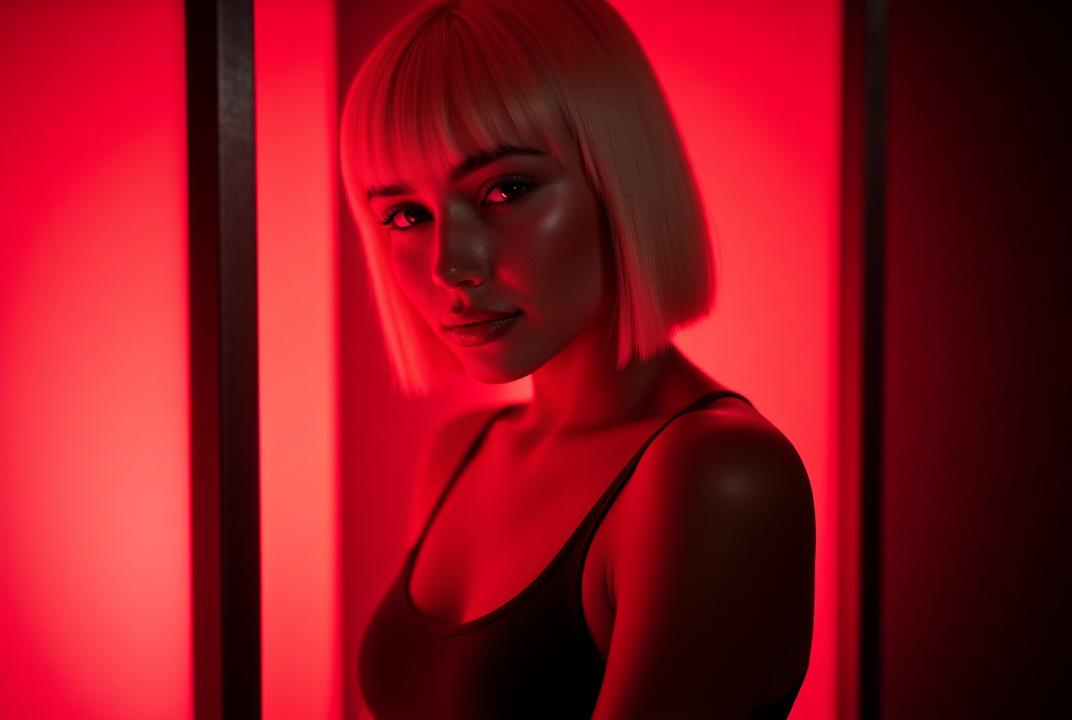As the pursuit of holistic health and beauty gains momentum, light therapy stands at the forefront of non-invasive treatments, offering promising solutions for a variety of skin concerns. Red and blue light therapy, in particular, have captured the attention of skincare enthusiasts and wellness advocates alike. With their unique wavelengths and targeted benefits, these therapies hold the potential to address issues ranging from acne to inflammation, and even muscle recovery. Join us as we unravel the differences between red and blue light therapy, empowering you to make informed decisions for your skincare and wellness goals.
What Is Red Light Therapy?
Using low-level red light wavelengths to pass through the skin, red light therapy is a non-invasive treatment meant to induce cellular regeneration and healing. Renowned for its potential to improve skin health by boosting collagen generation, lowering inflammation, and enhancing circulation, this treatment Red light therapy is a flexible choice for general wellness and skincare since it often used to reduce fine lines, wrinkles, and scars and helps in muscle healing and pain relieving. This treatment provides a natural and efficient way to revitalize the skin and assist in body healing by using light energy.
What Is Blue Light Therapy?
Particularly useful for treating acne and other skin diseases, blue light therapy is a modern treatment using precise wavelengths of blue light to target and destroy bacteria on the surface of the skin. Blue light therapy is a non-invasive substitute for conventional acne treatments by reaching the outer layers of the skin, so helping to lower inflammation and stop future breakouts. It can also be applied to problems including uneven skin tone and UV damage. Celebrated for its capacity to cleanse the skin, this treatment offers a better and healthier complexion that fits well with a whole skincare regimen.
Red Light vs Blue Light Therapy: What’s The Difference?
Understanding the Core Differences
Red and blue light therapy, while both beneficial, operate on different principles and target distinct skin conditions and concerns. Here's a closer look at how they differ:
- Wavelengths and Penetration:
- Red Light Therapy: Utilizes longer wavelengths, allowing it to penetrate deeper into the skin, reaching the dermis layer. This depth is crucial for stimulating collagen production and enhancing cellular repair.
- Blue Light Therapy: Employs shorter wavelengths, primarily affecting the epidermis, the skin's outermost layer. This makes it effective for targeting surface-level bacteria and treating acne.
Benefits and Applications
Each therapy offers unique benefits tailored to specific skin and wellness needs:
- Red Light Therapy:
- Promotes collagen and elastin production, reducing the appearance of fine lines and wrinkles.
- Enhances circulation, aiding in skin rejuvenation and healing.
- Supports muscle recovery and alleviates joint pain, making it suitable for broader wellness applications.
- Blue Light Therapy:
- Effectively kills acne-causing bacteria, reducing breakouts and preventing future acne.
- Helps in managing conditions like rosacea by reducing inflammation.
- Can improve skin tone and texture by addressing sun damage and hyperpigmentation.
Choosing the Right Therapy
Deciding between red and blue light therapy depends on your specific skin concerns and goals:
- For Anti-Aging and Skin Rejuvenation: Red light therapy is ideal for those looking to combat signs of aging and enhance overall skin health.
- For Acne and Bacterial Concerns: Blue light therapy is the go-to option for individuals struggling with acne or seeking to purify their skin.
Integrating Light Therapy into Your Routine
Both therapies can be seamlessly incorporated into your skincare regimen to address various skin conditions:
- At-Home Devices: Numerous devices are available for personal use, allowing you to enjoy the benefits of light therapy conveniently at home.
- Professional Treatments: For more intensive care, professional treatments offer higher intensity and precision, often combining both red and blue light for comprehensive results.
By understanding the distinct advantages across the spectrum of red and blue light therapy, you can make informed decisions to enhance your skincare and wellness journey.
Can Red and Blue Light Therapy Be Used Together?
Yes, red and blue light therapy can be effectively used together, offering a comprehensive approach to skincare and wellness. Combining these therapies allows you to simultaneously address multiple skin concerns, such as acne and signs of aging. Blue light therapy targets and eliminates acne-causing bacteria on the skin's surface, while red light therapy penetrates deeper to stimulate collagen production and reduce inflammation. This synergistic use enhances overall skin health, providing a clearer, more youthful complexion. Many at-home devices and professional treatments are designed to incorporate both led light therapy techniques, maximizing their benefits and offering a versatile solution for diverse skincare needs.
Should I Do Red or Blue Light First?
When using both red and blue light therapy, it is generally recommended to start with blue light therapy. This sequence allows the blue light to effectively target and eliminate surface-level bacteria, reducing acne and preventing future breakouts. Following up with red light therapy can then penetrate deeper into the skin, promoting healing, reducing inflammation, and stimulating collagen production. This order ensures that the skin is first cleansed of impurities, allowing the red light to work more efficiently in rejuvenating and repairing the skin. By following this sequence, you can optimize the benefits of both therapies for a healthier, more radiant complexion.
Is It Better To Sleep With Red or Blue Light?
When it comes to sleep, red light is generally considered more beneficial than blue light. Red light has a calming effect and does not interfere with the production of melatonin, the hormone responsible for regulating sleep cycles. This makes it an ideal choice for evening use, as it can help promote relaxation and improve sleep quality. In contrast, blue light, commonly emitted by electronic devices, can suppress melatonin production and disrupt sleep patterns, making it less suitable for nighttime exposure. Therefore, incorporating red light into your evening routine can support better sleep, while minimizing blue light exposure before bed can help maintain a healthy sleep cycle.
Common Confusions Between Red Light vs Blue Light Therapy
- Purpose and Benefits: Many people confuse the primary purposes of each therapy. Red light is often associated with anti-aging, wound healing, and skin rejuvenation, while blue light is primarily used for treating acne, bacterial skin issues, and other skin conditions.
- Wavelength and Penetration: There is often confusion about how deeply each light penetrates the skin. Red light penetrates deeper, affecting the dermis, whereas blue light targets the epidermis, the skin's outer layer.
- Immediate vs. Long-term Effects: Some users expect immediate results from both therapies. Blue light may show quicker results in reducing acne, while red light typically requires consistent use for long-term benefits like improved skin texture and reduced wrinkles.
- Safety and Side Effects: There is a misconception that both therapies have similar safety profiles. While both are generally safe, blue light can sometimes cause dryness or irritation in sensitive skin, whereas red light is usually well-tolerated.
- Device Usage: Confusion often arises regarding the use of at-home devices. Some believe that the same device can be used interchangeably for both therapies, but it's important to use devices specifically designed for each type of light to ensure effectiveness and safety.
Conclusion
In conclusion, understanding the distinct roles and benefits of red and blue light therapy empowers you to make informed decisions tailored to your skincare and wellness needs. Whether you're seeking to combat acne, reduce signs of aging, or enhance overall skin health, these therapies offer versatile, non-invasive solutions that can be easily integrated into your routine. By recognizing the unique advantages of each light type and how they can complement one another, you can optimize your approach to achieving a clearer, more youthful complexion. Embrace the transformative potential of light therapy and elevate your self-care journey with confidence and clarity.
Final Thoughts
At EMR-TEK, we take pride in offering superior red light therapy devices that reflect our unwavering commitment to quality and innovation. Our range spans from portable units to larger systems, designed to fit various lifestyles and environments. Explore our offerings and choose the perfect device to advance your wellness goals, with the confidence of utilizing state-of-the-art technology.
Sources
- https://www.chronobiologyinmedicine.org/journal/view.php?number=167
- https://www.cosmopolitan.com/style-beauty/a62369596/blue-light-therapy-skincare-benefits/
- https://en.wikipedia.org/wiki/Light_therapy
Disclaimer: EMR-TEK’s red infrared light therapy devices, blue light blocking glasses, and other products are intended solely for personal wellness and fitness use. They are not designed to diagnose, treat, cure, or prevent any disease and should not be considered medical devices. We do not make any therapeutic claims. Our products align with the FDA’s “General Wellness: Policy on Low Risk Devices” guidelines and do not require FDA clearance. Please note, EMR-TEK’s products are for personal use only and not for commercial application.




Share:
How Often Should You Use Red Light Therapy On Your Face: RLT Facial Frequency
How To Speed Up Muscle Strain Recovery: Step-by-Step